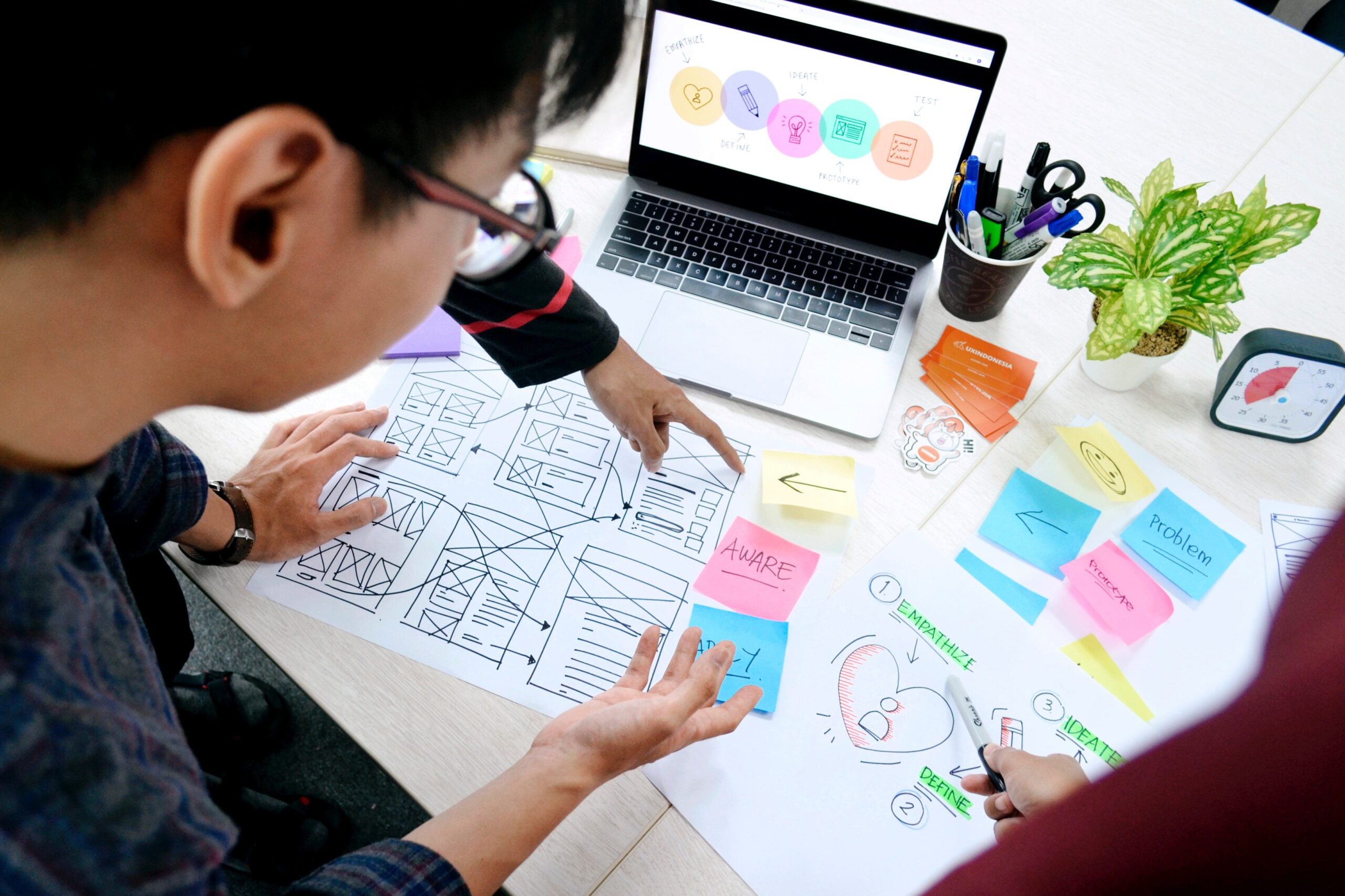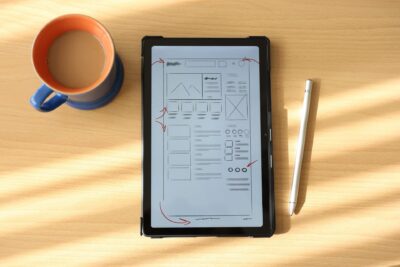In the world of websites and user interfaces, there’s always talk about the visual elements and layout. But there’s a component that’s just as important but often overlooked: motion design. Imagine visiting a website where every transition, animation, and movement feels natural, smooth, and intuitive. It’s like walking through a well-lit room where every piece of furniture is right where it should be. That’s what motion design can do for user experience (UX). It’s not just about flashy animations; it’s about creating a cohesive and seamless experience for everyone visiting your site. And as more businesses move online, ensuring that your website offers a memorable experience is crucial. This is where motion design comes into play, enhancing user experience in subtle yet impactful ways. Whether you’re a business owner, a freelancer, or an agency, understanding the role of motion design in UX can make a world of difference. So, stick around as we explore the fascinating world of motion design and its profound effect on UX.
What is Motion Design in UX?
Motion design might sound like it’s all about creating cool animations and effects, but it’s so much more. At its core, motion design in UX is about communicating with the user through movement. Think about the last time you used a mobile app or a website, and you saw a button gently animate when you pressed it or a menu smoothly slide into view. Those are examples of motion design at work.
But what differentiates motion in user experience (UX) from other animations you might see in, let’s say, a movie or a video game? The difference lies in its purpose. While films and games often use motion to entertain, in UX, the goal is to guide and inform. A well-animated button not only looks good but also indicates that an action has been taken. A menu that slides in gives the user a sense of spatial awareness, helping them understand where they are within a website or app.
And then there’s the distinction between UI and UX motion design. While both are closely related, UI motion design is typically focused on individual interface elements, like buttons and menus. UX motion design, on the other hand, looks at the bigger picture — how the entire experience flows and feels from one interaction to the next.
The role of a motion designer in the world of UX is crucial. They’re not just there to make things look pretty. Their job is to ensure that movement on the screen makes sense, feels natural, and, most importantly, enhances the user’s experience.
So the next time you find yourself admiring a particularly smooth transition or a delightful animation on a website, know that there’s a whole lot of thought and care that went into it, all to make your experience just a bit better.
Why is Motion Design Important for UX?
When we think of our experiences with websites or apps, it’s often the little things that make a difference. Have you ever felt a sense of satisfaction when an animation felt just right, or perhaps a tinge of frustration when something didn’t move the way you expected? That’s the influence of motion design on your experience. It might seem subtle, but its impact is deep.
Consider an everyday example. Imagine you’re on a website, clicking through a photo gallery. Each photo slides seamlessly to the next, creating a fluid experience. It feels as if you’re flipping through a physical album. Now, imagine if those photos just abruptly changed without any transition. It might be jarring, right? That smooth slide – that’s motion design subtly working to make the experience feel more natural and intuitive.
And it’s not just about aesthetics or making things “look good.” It’s about communication. Through motion, a website or app can guide a user’s attention, indicating what to do next or signifying the result of an action. For example, a button that animates upon being clicked gives instant feedback, reassuring the user that their action was successful.
There’s also a psychological element. Our brains are wired to respond to movement. From our early ancestors who relied on motion to detect predators, our attention is instinctively drawn to things that move. Harnessing this natural inclination, motion design can effectively guide users, making navigation simpler and more intuitive.
However, like many good things, it’s about balance. Too much motion, and a site can become overwhelming. Too little, and it might feel static and unengaging. It’s like adding seasoning to a dish; the right amount can elevate it, but overdoing it can overshadow the main ingredients.
The essence of motion design’s importance in UX lies in its ability to bridge the gap between the digital world and our human instincts, creating experiences that feel not just functional, but also delightful and memorable. It’s about understanding users, what they expect, and how they interact with the digital space, and then crafting motion that aligns with these expectations.

Crafting an Exceptional User Experience
In the bustling world of online interaction, standing out is more than just having a visually appealing website or app. It’s about the entire experience, the story your platform tells from the moment a user arrives to the moment they leave. But, you may wonder, how does one craft an experience that’s both intuitive and memorable? Let’s explore this together.
Think of your favorite cafe. What makes you go back? It’s not just the coffee. It’s the ambiance, the friendly staff, the ease with which you find your preferred spot. These factors collectively create a comforting and seamless experience. Similarly, in the digital world, every interaction, button click, and page transition is a touchpoint that shapes the user’s journey.
A designer’s primary task in this journey isn’t merely about choosing colors or designing icons. It’s about understanding the user. What are their needs? What do they expect when they click a button or swipe a page? These insights are the foundation of user-centric design. And this is where motion design plays its part. By incorporating motion thoughtfully, designers can guide, inform, and sometimes even delight users.
Imagine reading a page and coming across a section you want more information on. Instead of taking you to a new page, a gentle animation expands the section, revealing more details. Not only does this feel fluid, but it also minimizes disruption, keeping the user engaged.
But the path to creating such experiences requires a balance. It’s about understanding when to use motion to guide, when to use it to inform, and when to keep things static. Like a seasoned chef knows when a dish needs a bit more salt or when it’s perfect as is, designers must discern how to incorporate motion to enhance, not detract.
In essence, crafting a memorable user experience is a dance of many elements, with motion design being one of its pivotal partners. When done right, it ensures users leave with a positive memory, eager to return.
Enhancing Motion Design Skills for Better UX
Motion design in the realm of user experience isn’t just about knowing the tools or having a creative flair. It’s about understanding the purpose behind every movement, every animation. And if you’re looking to enhance your motion design skills for better UX, it starts with the basics: understanding the user.
Now, let’s imagine you’re crafting a new animation for a website. It’s tempting to go all out, incorporating complex transitions and effects. But, the key is to ask yourself: does this animation make the user’s journey smoother? Or is it merely for aesthetic purposes? If it’s the latter, it might be worth reconsidering.
Each animation should have a clear intent. Whether it’s to guide, to inform, or to confirm an action, there should be a purpose behind every movement. This user-centric approach is what differentiates general animation from motion design in UX.
Additionally, it’s beneficial to be familiar with the 12 principles of UX in motion. While they can sound technical, at their heart, they’re about creating fluid, logical, and intuitive animations. These principles act as guiding stars, ensuring that motion serves the user, enhancing their experience without overwhelming them.
Understanding the theory is one aspect. Putting it into practice is another. Start with small projects. Maybe it’s refining the transition on a button or enhancing the slide animation of a menu. With each project, focus on the user’s perspective. Test it out, gather feedback, and iterate. Over time, as you incorporate user feedback and stay true to the principles of UX motion, your skills will naturally enhance.
But remember, in the world of UX and motion design, there’s always room to grow and learn. It’s an evolving field, with new techniques and insights emerging regularly. Stay curious, and keep the user’s needs at the forefront. That’s the path to truly mastering motion design for improved user experience.
Real-World Examples of Motion Design Elevating User Experience
In the vast ocean of websites and apps, there are those that stand out, not just for their design but for the experience they offer. Often, the unsung hero behind these memorable experiences is motion design. Let’s discuss a couple of instances where motion design took the user experience from ordinary to memorable.
First, consider online shopping platforms. A shopper sees a product they’re interested in and hovers their cursor over it. Instead of just highlighting the product, there’s a subtle zoom-in and maybe even a slight rotation, giving the shopper a better view. This simple interaction makes the browsing experience feel tangible, almost as if they’re picking up the product in a physical store. The purpose here isn’t just to show off a fancy animation; it’s to bridge the gap between online and offline shopping experiences, making the user feel more connected to the product.
Another great example is in feedback systems. Imagine a user fills out a form on a website. Upon clicking the submit button, instead of merely redirecting to another page, there’s a concise animation. The form compresses into a small envelope, which then smoothly flies off the screen. Moments later, a gentle pop-up appears, indicating the message has been sent. This motion not only provides visual feedback but also adds a touch of personality, making an otherwise mundane task feel engaging.
Or take navigation menus as another instance. While a static menu gets the job done, a menu that employs motion to indicate where you are, or to subtly hint at what’s to come as you hover over options, makes navigation feel like a guided tour rather than a task.
These examples underscore the same point: motion design in UX isn’t about flashy animations. It’s about enhancing the user’s journey, making interactions feel intuitive, and adding that extra touch of thoughtfulness. When incorporated with care and purpose, motion design becomes the difference between a user merely visiting a platform and them truly enjoying their time there.
Showcasing Best Motion Designs for Superior UX
In the dynamic world of web and app design, there’s an aspect that’s both captivating and functional: motion design. The best motion designs aren’t just about pretty animations; they’re about improving the user experience, making platforms more intuitive, and creating memorable interactions.
Consider those moments when you’re on a website, and a small animation makes you think, “Wow, that was satisfying.” Maybe it was a subtle hover effect that made it crystal clear which button you were about to press. Perhaps it was a gentle transition between pages that made the site feel unified and smooth. These details, though minute, can significantly enhance how users perceive and interact with a platform.
One exceptional example of this is a feedback animation. After filling out a form, instead of getting just a bland ‘Thank you’ message, imagine a tiny animation where the form visually transforms into a thank you note, folding itself and settling down on the page. This not only confirms your submission but also makes the interaction memorable and pleasant.
Then there are the loading animations. Nobody likes waiting, but if there’s a delightful animation indicating progress, it makes the wait bearable, if not enjoyable. It could be something as simple as a playful bouncing dot or as intricate as an evolving pattern. The key is to provide a visual distraction that’s pleasant, making users less likely to get frustrated during a brief wait.
Navigation can also benefit greatly from motion design. Instead of just static icons or text, imagine icons that morph into labels when you hover over them, giving users a clear indication of where they’re headed next. Or consider a menu icon that transforms into an ‘X’ when clicked, clearly signaling how to close the menu.
Yet, in all these scenarios, moderation is essential. Too much motion can be distracting or even annoying. The goal is always to enhance, not overshadow. Every animation should have a clear purpose, whether it’s to guide, inform, or delight.
So, when thinking about motion design for your platform, or when looking to hire a developer – like the passionate team at heyreliable.com who hand-code every project from scratch – it’s not about finding the flashiest animations. It’s about finding those that fit seamlessly into the user’s journey, making every interaction smoother, more intuitive, and just a bit more delightful.

Why Collaborate with Hey Reliable?
First, let’s talk craftsmanship. At heyreliable.com, we believe that the best creations come from a solid foundation. That’s why we hand-code every project from scratch. This might seem like an old-fashioned approach in an age where converter tools and plugins are all the rage. But just like a tailor-made suit fits better than an off-the-shelf counterpart, our custom-coded projects align perfectly with your unique needs and aspirations.
And about those converter tools and plugins? While they may offer quick solutions, they can also introduce vulnerabilities and compatibility issues. By starting every project with a blank canvas, we ensure that the end product is as robust as it is elegant.
Our commitment extends beyond just the technical side of things. As a preferred developer partner for agencies and freelancers, we’ve had the privilege to work on a diverse array of projects. This has given us invaluable insights into varying industries and user expectations, allowing us to craft solutions that resonate deeply with the target audience.
More than just developers, we consider ourselves your partners in this adventure. We share in the excitement of your vision, and our primary goal is to see it come to life in the most impactful way possible. Every pixel we place, every line of code we write is driven by this shared enthusiasm.
Finally, collaboration is a two-way street. We don’t just deliver a product and wave goodbye. We’re here for the conversations, the brainstorming sessions, and even those moments of doubt. Together, we navigate the challenges and celebrate the milestones.
In a nutshell, choosing heyreliable.com means opting for a dedicated partner who values craftsmanship, integrity, and, most importantly, the aspirations of those we serve.
In Closing
As we wrap up our discussion on motion design and its transformative impact on user experience, it’s worth taking a moment to reflect on the importance of thoughtful collaboration in the digital space. Crafting a memorable online presence is an art, a dance of visual cues and user interactions that feel intuitive and delightful. And in this dance, every detail, from the tiniest animation to the most intricate design, plays a pivotal role.
Choosing the right partner for this journey is paramount. At Hey Reliable, we pride ourselves on hand-coding each project, ensuring that every animation, every transition, and every interaction aligns seamlessly with your brand’s vision. But beyond the technical, it’s the human touch, the genuine care, and the commitment to understanding your aspirations that make all the difference.
In a world filled with fleeting digital interactions, we believe in creating moments that linger, experiences that resonate, and partnerships that endure. So, as you contemplate your next digital venture, remember the value of craftsmanship, the power of motion design, and the profound difference the right collaboration can make.
YOU MAY ALSO ENJOY





